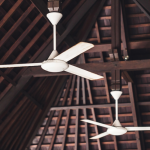Some real estate experts agree that flooring’s one of the major players when it comes to receiving a good ROI on home improvements.
If you want your new flooring to look it’s best in years to come if you sell your house, it’s important to prepare your home thoroughly before you install it.
Check out these tips to make sure your home’s ready for a new floor installation.
1. Discuss Your Installation in Depth
When inquiring about the cost to install flooring, make sure you understand what’s included in the quote. Some flooring companies charge extra if you want them to move heavy furniture.
Different types of floors require different pre-installation preparations. You need to find out whether the flooring you’re installing needs additional sub-floor preparation and whether you should arrange this beforehand.
2. Clear the Decks
You can save time and reduce risk by removing everything from your room before the floor installation company arrives. Try to create a blank slate for the floor installers to work with.
Place all your furniture in another room and remove any fragile items from the walls and shelves. Your floor installers focus on the task at hand and could inadvertently knock items off their perches while moving equipment and floorboards.
Remove drapes, blinds, and wall hangings that could get in the way too.
If you’ve asked your flooring team to move heavy furniture on your behalf, empty the contents from these pieces beforehand.
3. Clean Surfaces Before Your Floor Installation
You can install installing vinyl plank flooring, and other types of floating floors on any level subfloor, but that doesn’t mean you shouldn’t prep your floor before the time. Read more about these types of floors to get an idea of what’s involved.
Clean your existing floor thoroughly the day before the flooring installers arrive. This will minimize allergens, mold, dust, and mildew on the subfloor.
You don’t want these nasties lurking beneath your brand-new flooring. If you’re hoping that new flooring will eliminate that funky odor you’ve always blamed on your old floor, you might find out this isn’t true if you don’t clean your floors.
4. Acclimatize the Flooring
This might seem like an odd suggestion, but it’s a known fact that floorboards need time to adjust to the temperature of your room.
Leave your flooring material in the intended room for a few days before installation. Otherwise, they could end up warping or lifting due to temperature-related expansion and contraction.
Most types of flooring have temperature recommendations on the packaging.
5. Measure the Space Under Your Doors
When deciding on the right flooring for a room, remember that you’re raising the height of your floor by the height of the flooring material, especially when you’re installing a tile floor.
While a few millimeters won’t make a difference to the appearance of your room, your doors and built-in closets might not close properly over a raised floor.
Avoid floorboards that are too thick to allow your doors to swing freely. Otherwise, you’ll need to get a contractor to make some adjustments to the doors themselves.
Good Preparation Means Great Results
Bear these tips in mind and you’ll reap all the benefits of floor installation, without unnecessary stress.
Are you a keen home improvement enthusiast? Keep browsing our blogs for more awesome tips and advice.



